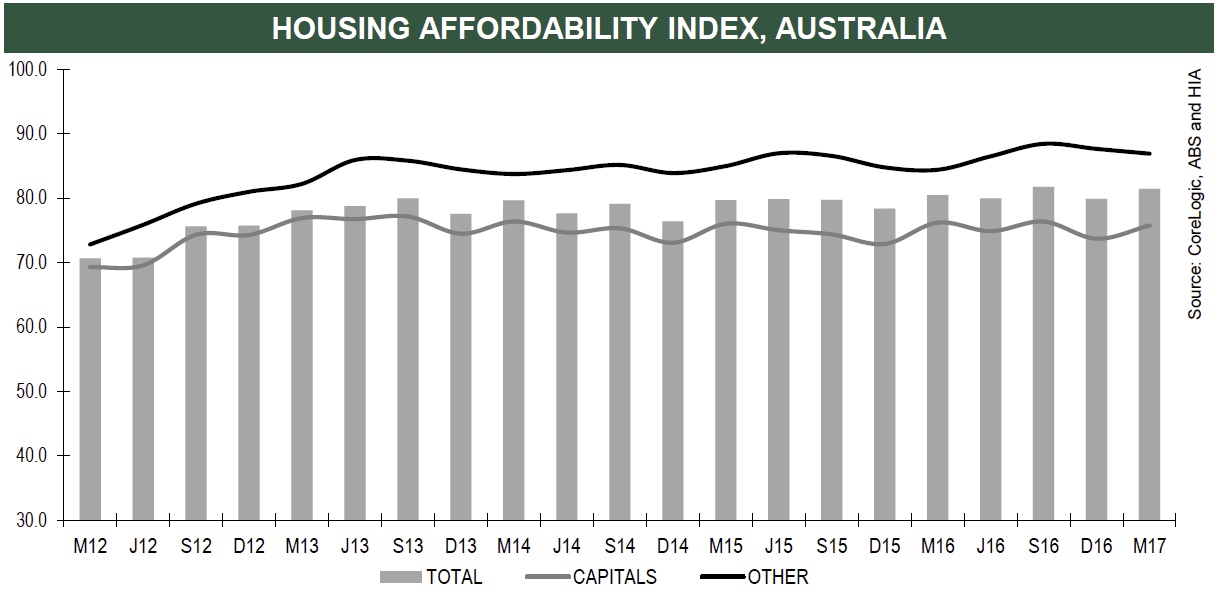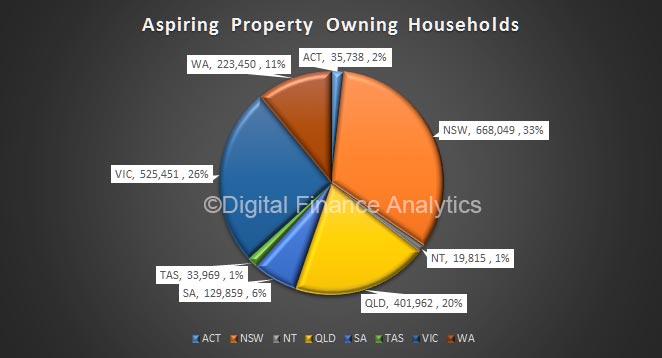From The Conversation.
In the first article reviewing The Conversation’s many articles on housing issues, the commentary about fiscal and supply-side issues was consistent. The same is not true for affordable housing due to the diversity of affordability issues.
The issues have to do with the complexity and scale of the affordability problems and possible policies discussed in Conversation articles since January 2016. As it is not possible for one article to cover all the relevant policies, the focus here is on the National Affordable Housing Agreement (NAHA), support for not-for-profit social housing, bond aggregation and inclusionary zoning.
 The terms affordable and social housing are sometimes used interchangeably, a potential cause of confusion. Affordable housing is more encompassing – it represents an aspiration for all who cannot enter the market for housing. This includes both ownership and rental.
The terms affordable and social housing are sometimes used interchangeably, a potential cause of confusion. Affordable housing is more encompassing – it represents an aspiration for all who cannot enter the market for housing. This includes both ownership and rental.
Social housing is one form of affordable housing. It includes public housing and housing owned and managed by not-for-profit community housing providers. As well as providing housing for those unable to enter the market, community housing providers accommodate, for example, people with disabilities and those escaping domestic violence.
A ‘hot’ political issue
Affordable housing is a “hot” issue. Recently, the new premier of New South Wales, Gladys Berejiklian, listed it as one of her top three priorities.
Federal Treasurer Scott Morrison claims supply-side constraints are pushing up housing prices. He targets state planning regulations as the problem.
Federal politicians favour this explanation as supply-side complaints can be used to blame state and local governments. This serves to divert attention from federal fiscal policies, which effectively subsidise home ownership.
How big is the problem?
Of the need for public and social housing, authors wrote:
We have modelled the income rules determining eligibility for public housing, and estimate that there are 900,000 households satisfying these income eligibility criteria.
… state-owned-and-managed housing still accommodates around 700,000 of our most vulnerable citizens.
… there are as many as 105,000 people who are without a home and 160,000 households on public housing waiting lists. The overall stock of public housing has fallen from 331,000 units in 2007-08 to 317,000 in 2013-14.
Social housing has nearly 200,000 Australians on a waiting list.
In addition to the public housing stock, not-for-profits provide about 100,000 social housing dwellings.
The scale of the affordable housing problem is highly dependent on mortgage stress. This, in turn, is linked most closely to household incomes and employment levels. This mortgage stress is not especially concentrated in the capital cities.
Into this affordability mix one might also add some 2 million Australians who “don’t have the resources to bounce back” from unexpected bills.
Ways to improve social housing supply
The NAHA, which has been referred to as Australia’s housing policy, is a “national partnership agreement” by the Council of Australian Governments (COAG). Its largest component is social housing.
Federal government ministers have described the A$1.3 billion-a-year NAHA as an “abject failure”. This is because it has not increased “the number and availability of public and social housing stock”.
In contrast, The Conversation authors agree that spending on public housing is inadequate and declining.
Australia’s social housing system remains grossly underfunded. Currently available resources are inadequate even to properly maintain the existing portfolio, let alone to underpin the new supply needed to keep pace with the growing need.
… the overall stock has been eaten away, through market sale of public housing, and run down, through skimping on repairs and maintenance.
The history of public housing is that housing was briefly referred to as a “right” after the second world war. Public housing was used to accommodate people from various classes; it was not initially a preserve of the poor. Later, that changed:
[Public] housing’s declining share of the housing stock became more tightly rationed to the lowest-income households. This eroded the system’s rent base. At the same time, its ageing buildings and households with greater support needs increased its costs.
When operating expenses are not covered, maintenance is inadequate. When that happens, the number of habitable units declines.
It is feared that the NAHA might not survive the 2017 budget. Likewise it is feared that:
… [Productivity] commission-inspired “reforms” could involve the forced sale of public housing to vulture capitalists unconstrained by enforceable obligations to provide tenant services or to maintain, upgrade and retain housing stock for its current purpose.
… some residents face eviction through large-scale public housing redevelopment by governments that view their homes as key real estate assets.
The fear of eviction from public housing sites with high land value is certainly warranted:
In March 2014, New South Wales government minister Pru Goward announced that all of the 293 public housing dwellings in Millers Point, Dawes Point and The Rocks, as well as the 79 apartments in the Sirius Building built for public housing in the 1970s, were to be sold. Their tenants would be moved.
One of the potential bipartisan ways forward is to scale up social housing provided by not-for-profits. As federal housing minister, Tanya Plibersek proposed in 2009 that:
… not-for-profit community housing providers would be supported to grow to a scale enabling them both to complement and compete with public housing entities.

Social housing tenants were evicted from the Sirius Apartments so the valuable inner-city site could be sold. Dean Lewins/AAP
Social housing critically serves low-income renters. The high cost and limited availability of rental housing is a defining feature of the affordability problem. It also underscores the inequality between owners and renters due to the fiscal policy benefits for home owners.
Funding is needed to scale not-for-profit social housing. In a context of seeking to cut public spending, Morrison is looking to private sector funding of the sector to increase both the supply of affordable housing and the transfer of public housing to not-for-profits.
He is seeking to secure such funding based on a bond aggregator model. This is best explained by the Australian Housing and Urban Research Institute (AHURI). It has proposed:
… an Affordable Housing Finance Corporation … designed to aggregate and source large amounts of capital from the bond market so as to provide lower-interest, long-term loans to not-for-profit community housing providers developing housing for lower-income households. The intention is that money would be raised efficiently with reduced financing costs rather than in expensive one-off transactions such as when borrowing from a bank.
AHURI cautions that the not-for-profit need for rental income means that households whose only income is welfare assistance cannot access not-for-profit social housing. The need for rental assistance remains.
Another means advocated for increasing the supply of affordable housing is inclusionary zoning. This approach requires a percentage of new housing projects on rezoned and government land to be affordable housing. An additional benefit is that this improves access to jobs for low-paid service workers.
Inclusionary zoning has long been practised in Europe, the US and, more recently, in South Australia. The rationale for inclusionary zoning is:
… that the uplift in land value results from public policy changes that allow for housing development or higher-density housing. It is not unreasonable, then, that landowner windfalls should be limited to achieve the important public policy outcome of housing affordability.
The Property Council opposes inclusionary zoning, claiming that it will increase the cost of housing for others. This is doubtful, for the following reason:
If a fixed percentage of affordable housing becomes a condition of rezoning … this will only affect the size of the landholder’s windfall gain. Developers will offer lower prices for the land, based on the mandated requirements for affordable housing.
The Greater Sydney Commission supports inclusionary zoning, which is sorely lacking in Melbourne. In Sydney, the debate concerns the percentage of dwellings allocated to affordable housing. The commission suggests figures of 5%-10%, whereas The Conversation authors advocate:
… at least 15% of housing in new private developments … [and] on publicly owned land, at least 30% of new housing developments should be affordable.
Fresh approaches and funding needed
If NAHA funding is reduced, or the NAHA is terminated, the affordable housing problem will sharply escalate. Australia’s “housing crisis” will truly deserve that label.
It can be anticipated that social housing provided by not-for-profits can scale, but this will take many years. Government rental assistance will still be needed. Inclusionary zoning is desirable and can serve low-income households, but will never be an alternative to the need for social housing.
The question is what policy alternatives Morrison has in mind and how much he is prepared to spend.
Author: Richard Tomlinson, Professor of Urban Planning, University of Melbourne
Treasurer Scott Morrison has come under fire for the plan.











